Most Americans don’t think of Mexico as a place of forests and waterfalls and fields of wildflowers. But it is! Not far from San Miguel de Allende are the foothills of the Sierra Gorda — the Fat Mountains. We went there on Sunday to forage for mushrooms.
Our adventure began at 7am in front of Mercado Sano, where all San Miguel food adventures start. There, we met our tour guide, super fun Pablo from Permacultours https://www.facebook.com/Permacultours-369743366716206/ . The hour was too early for some of us, but we had time to rest while Pablo drove us east, past Queretaro and then down a dirt road, through corn fields and cattle pastures. After about 90 minutes, we arrived at our destination — a small ranch with modest buildings nestled into a hillside above the main road. The ranch belongs to Marta, who raises bees for their organic honey, and dries wild mushrooms to sell to high end markets. Marta is Otomi, an indigenous community that was powerful in this part of Mexico until the Aztecs arrived in the 14th century.
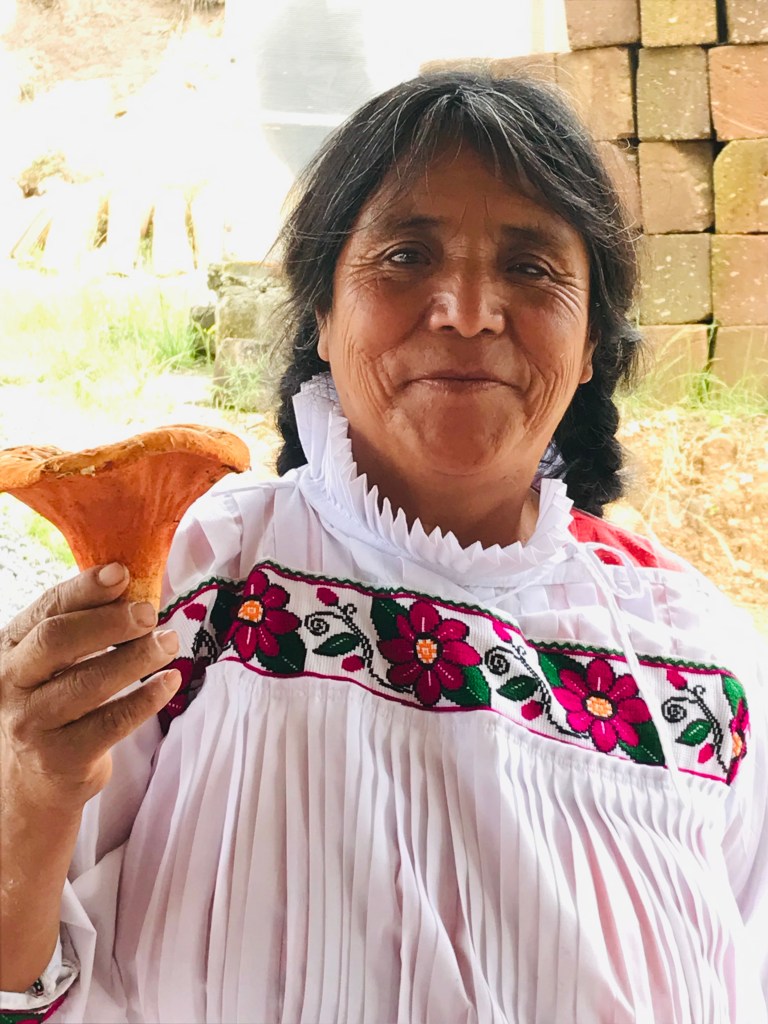
Before we set off for mushroom foraging, Marta and her teenage daughter served us a sumptuous breakfast of wild mushroom tamales and atole, both vegan and made from local ingrediants. Atole is a traditional Mexican beverage made from corn, sweetened with local honey and spiced with cinnamon. After breakfast, we joined our mycologist, Daniel, for our hike into the forest.
The hike felt so familiar — we could have been in one of the Bay Area’s regional parks. We walked through hills of bright pink cosmos and yellow goldenasters, into forests of oak and madrone. Along the way, Daniel dispatched us into stands of trees where the soil was still moist from recent rains.
Although Mexican cuisine is not associated primarily with mushrooms, Mexico is second only to China in its consumption of mushrooms, and Mexico’s rural communities rely on wild mushrooms as a staple during mushroom season. In the region of Sierra Gorda, Daniel estimates there are 80 varieties of wild mushrooms, many edible.
Like most adventures, ours included a bit of drama. I somehow got separated from the group. I knew I was off the beaten path when I started finding a lot of mushrooms. I felt a moment of panic to be alone in the woods without cell service, until I reminded myself that this patch of wilderness was part of a rural community. I followed the creek to houses where dogs had apparently been trained to discourage people from asking directions. After awhile, I came upon a dogless man who told me in very good Spanish how to get back to Marta’s. I paid special attention to how his arms were waving!
I arrived back at the ranch safe but worried that my group might be looking for me instead of mushrooms. I thought about how kids get in trouble for getting lost unless they break a leg or get eaten by a bear. I didn’t care for either option, so when the group arrived back, I accepted my fair share of eyerolls. But Marta served us a delicious lunch — vegan pozole and mushroom tacos.
On the ride home, everyone agreed we had a great adventure except for my getting lost. But in Mexico, you’re never really lost.
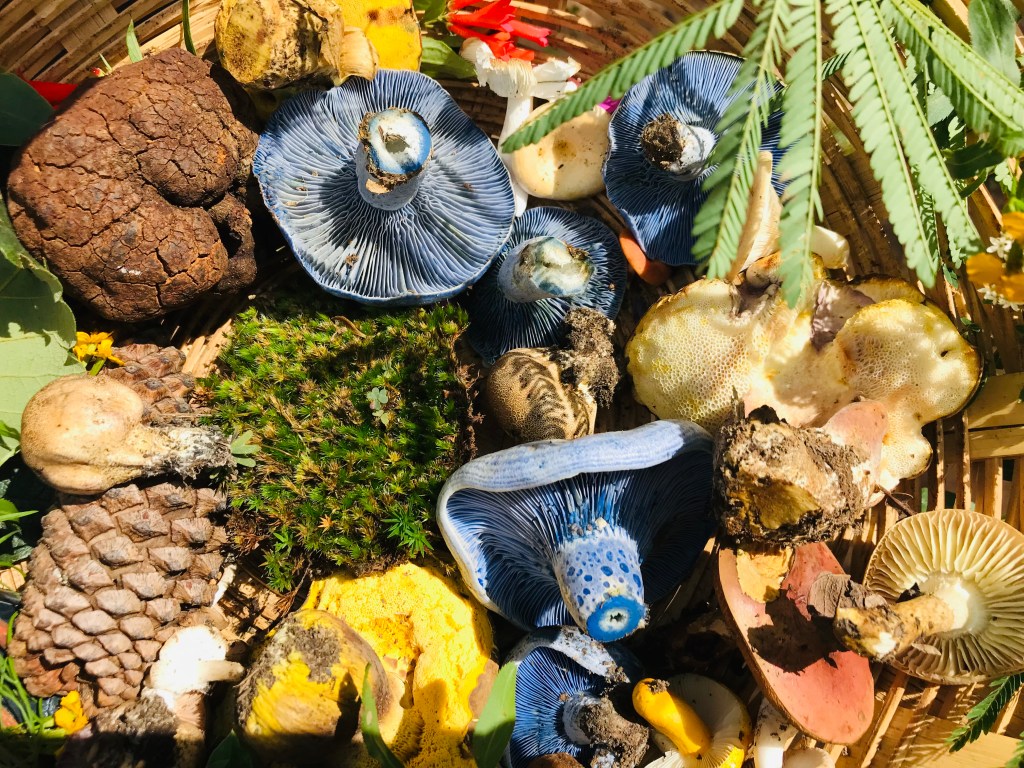
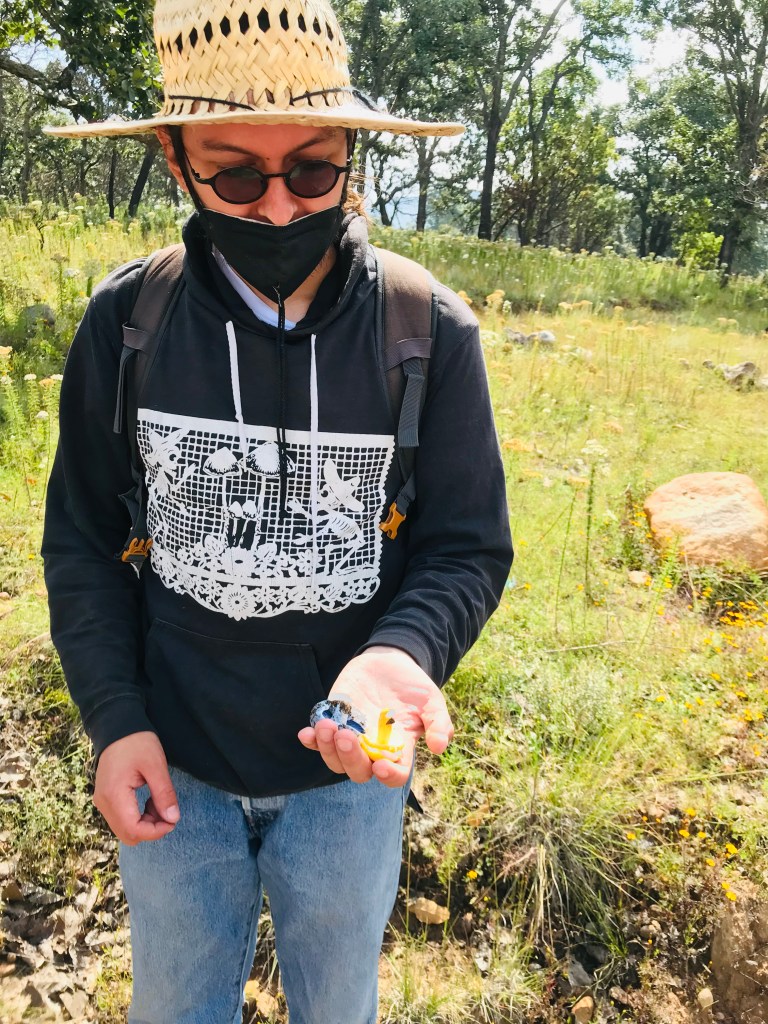
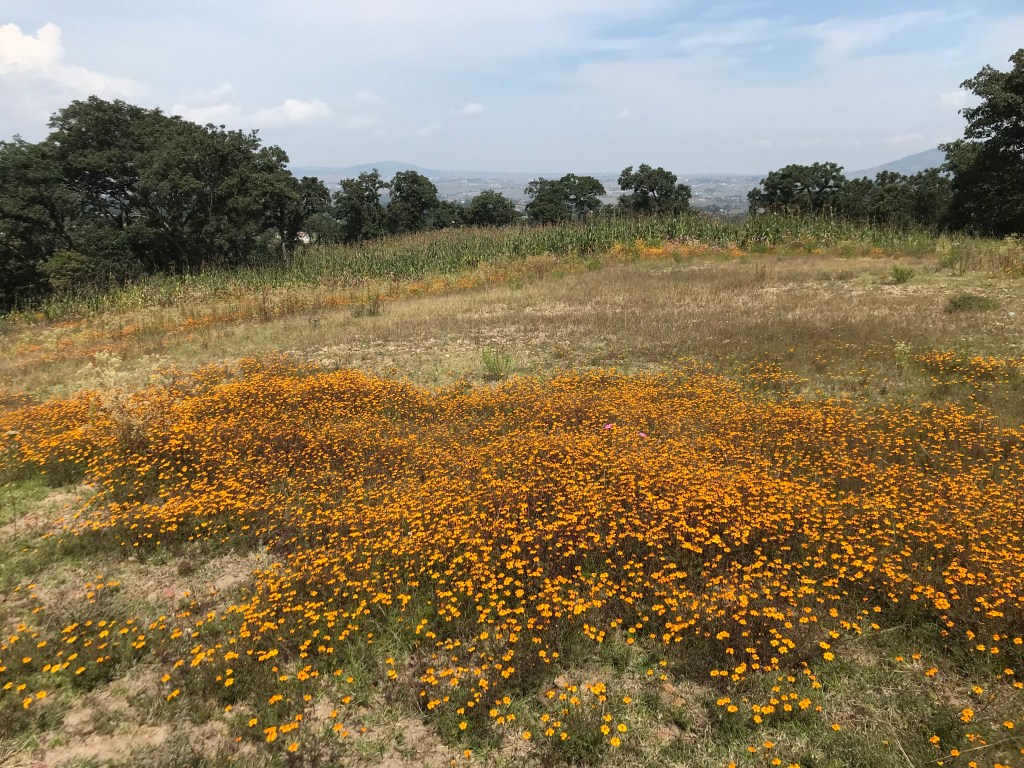
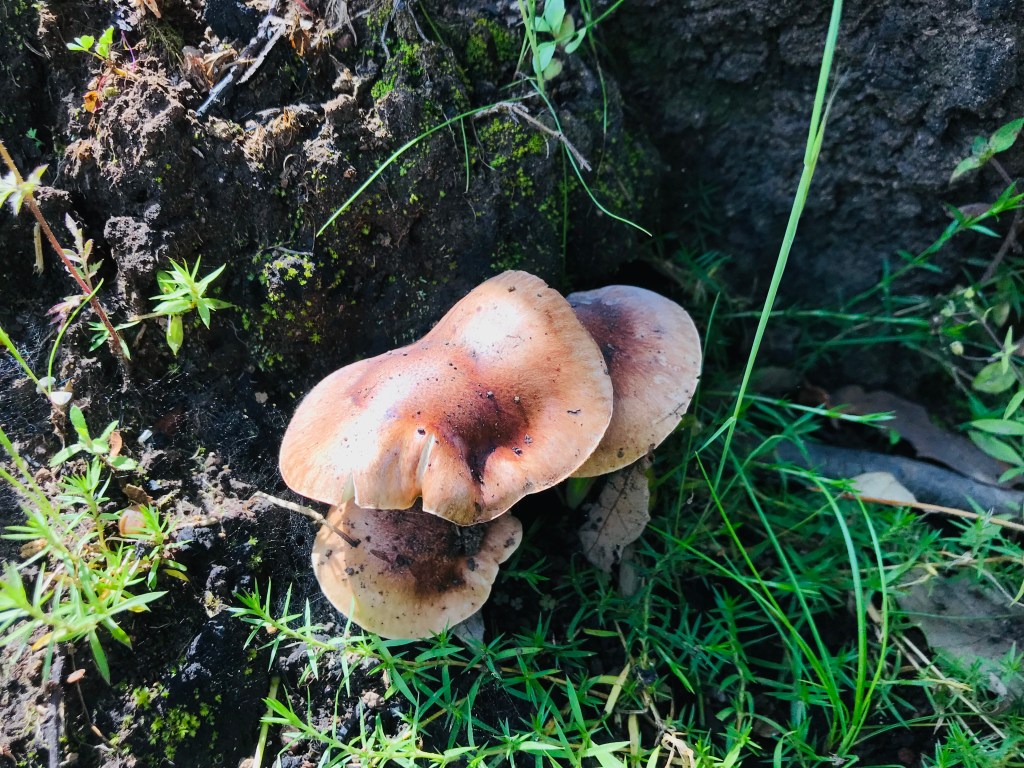
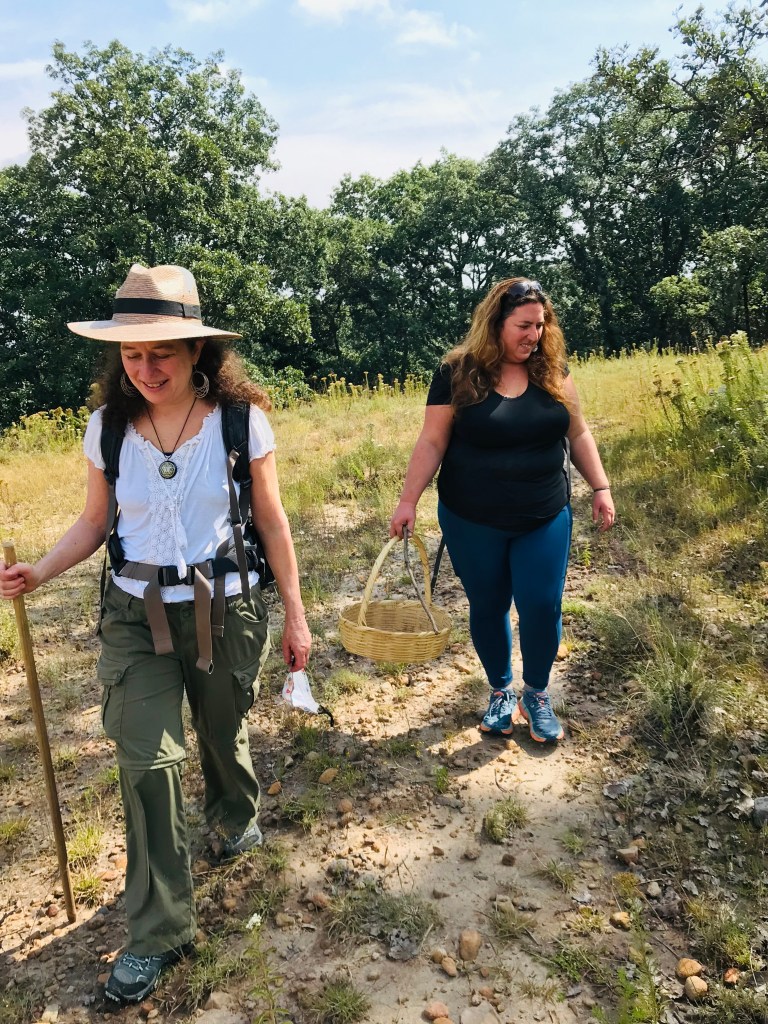
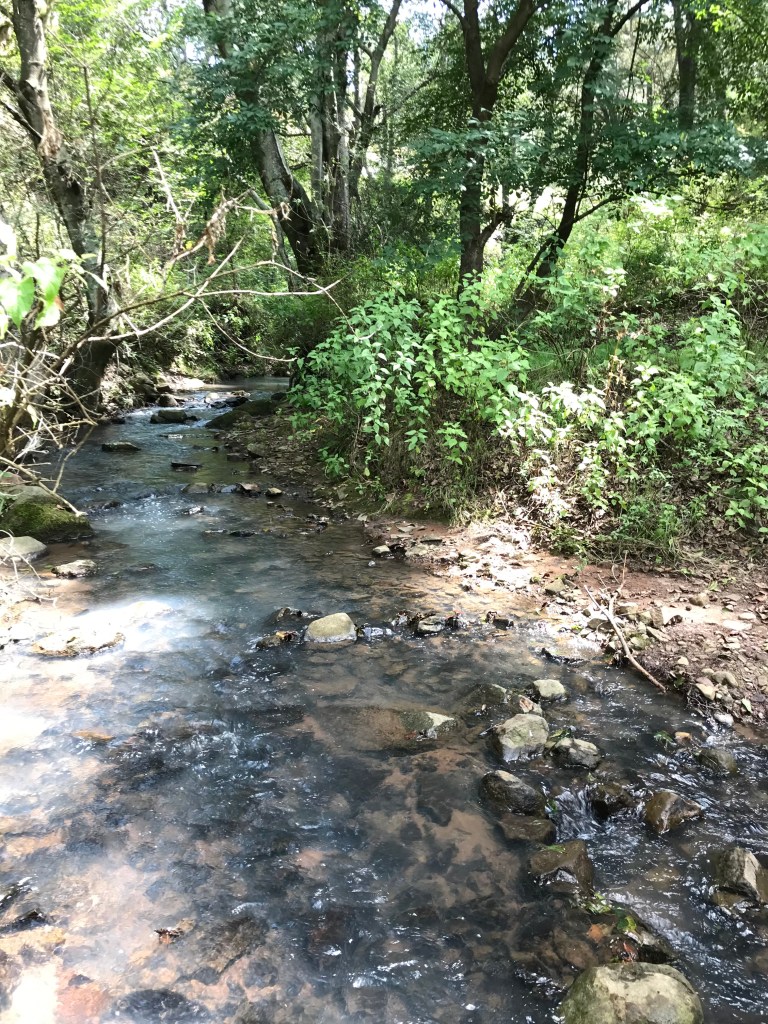

A fascinating tour, Kim. What a relief that you were able to get back to Martha’s without any incident!
Yes, follow the river….you’ll always find humans
Or find yourself on a cliff.
What an adventure! Love reading about your experiences.
Wish you coulda been there!
Great post Kim! I learned a lot from it. I had no idea about the history of the colonizers requiring indigenous women to wear bright colors so they would stand out as the lower class. That’s stunning.
The photos are marvelous. You’re very talented in that regard.
And for Pete’s sake will you please stick with the group you’re in on future expeditions!
Original signed by,
Your mom.
🙂
The colorful mushrooms are amazing. Glad you hooked up with the tour again. All’s well that ends well.
Yes, worth it!
What a lovely day, Kim! The food sounds delicious, and the blue mushrooms are stunning. I want a shirt like Daniel’s with the mushrooms and papel picado!
I love that shirt. Daniel is one of only 100 mycologists in Mexico, and he suggested the group of them are scrambling to protect wild mushroom habitat and educate people about them.
Now, thanks to you, I won’t have to go on a mushrooming tour because you’ve taken me there! Abrazos, BB
Well thank you but there’s no substitute for getting tired and dirty in the sweet mountain air.
I love the colorful mushrooms! Also did not know about colonizers having a dress code for indigenous. Not surprising, though.
I know, that’s kind of wild! I’ve also heard each village in Guatemala has its own way of decorating huipils (traditional blouses),originally so the colonizers could identify where the women come from in case they made any trouble!
I had no idea Mexicans ate so many mushrooms!!
In San Miguel, mushrooms are featured in a few of the healthier restaurants (maybe more than a few, haven’t been to all of them)
Fantastic tour! Love mushrooming!
Yes, I am hooked. I tried to get in a foraging group when I lived in Berkeley and no way were they going to let an outsider into their very secretive club. Here, there are so many mushrooms and so much open space, I don’t think the mushroom crowd is so territorial.
That’s hilarious! I did join a foraging club in Ontario and it was very informative, but I became somewhat territorial myself after finding several patches 🙂
Sounds like fun and nothing I thought someone would do in Mexico!Do you eat the blue ones??
Yes, the blue ones are edible. We also found a destroying angel, an aminita that is among the deadliest of mushrooms. According to Daniel, if you hold them in your hand long enough, you can damage your liver.
Yikes!
Love the indigo shrooms! Glad you caused a bit of trouble. It will make the day far more memorable. Happy trails.
I am going to quote you on that!
Beautiful blog with colorful mushrooms!
Thank you!
I’m afraid you’re lost. And at the end of the adventure story I really knew you were lost. Thank God you’re okay.
Yes. Sometimes getting lost is interesting!
And your loss is a wonderful experience haha
That was quite a tour Kim, those are different kinds of mushrooms there, were you able to differentiate the poisonous ones from the ones that can be eaten?
I am just glad you got back safe to Martha’s!
Our guide is a professional mycologist so he identified which mushrooms were edible and which were poisonous. Thanks for your comments!
That’s really nice, stay well through your travels!
This sounds like a great mushroom hunting experience! I knew that Mexico had an incredible biodiversity of fungi but I didn’t realize Mexicans were second only to China in their consumption of mushrooms. Very interesting 🙂
Hi Kyle, yes, they’re everywhere on restaurant menus too — thanks for stopping by!